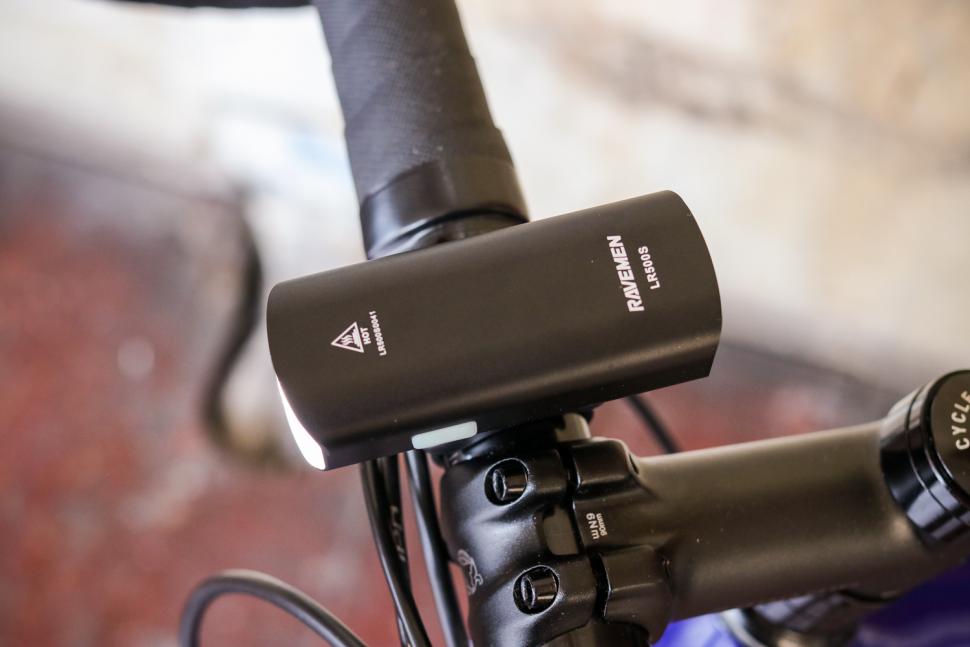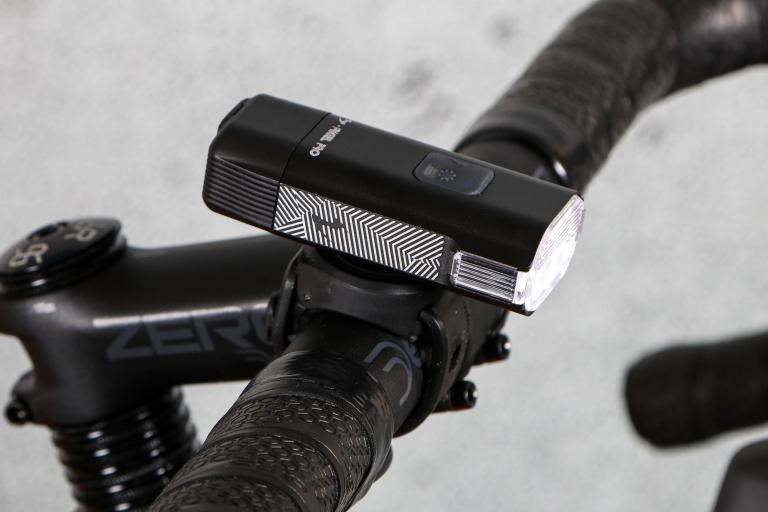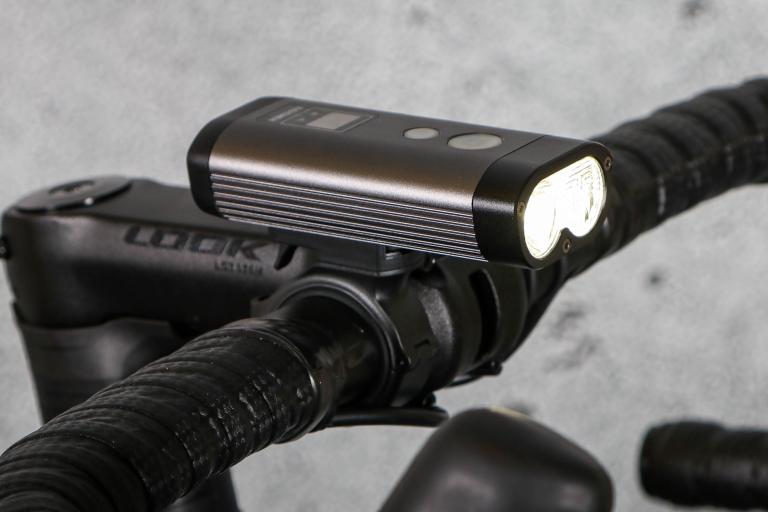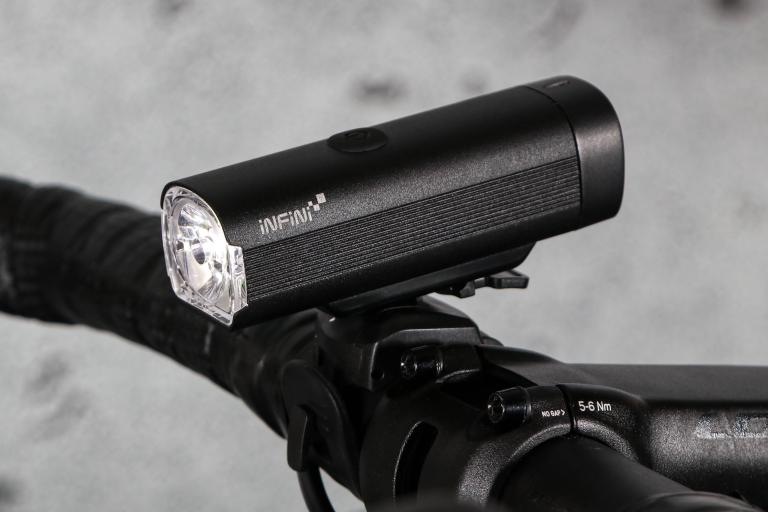- News
- Reviews
- Bikes
- Accessories
- Accessories - misc
- Computer mounts
- Bags
- Bar ends
- Bike bags & cases
- Bottle cages
- Bottles
- Cameras
- Car racks
- Child seats
- Computers
- Glasses
- GPS units
- Helmets
- Lights - front
- Lights - rear
- Lights - sets
- Locks
- Mirrors
- Mudguards
- Racks
- Pumps & CO2 inflators
- Puncture kits
- Reflectives
- Smart watches
- Stands and racks
- Trailers
- Clothing
- Components
- Bar tape & grips
- Bottom brackets
- Brake & gear cables
- Brake & STI levers
- Brake pads & spares
- Brakes
- Cassettes & freewheels
- Chains
- Chainsets & chainrings
- Derailleurs - front
- Derailleurs - rear
- Forks
- Gear levers & shifters
- Groupsets
- Handlebars & extensions
- Headsets
- Hubs
- Inner tubes
- Pedals
- Quick releases & skewers
- Saddles
- Seatposts
- Stems
- Wheels
- Tyres
- Health, fitness and nutrition
- Tools and workshop
- Miscellaneous
- Cross country mountain bikes
- Tubeless valves
- Buyers Guides
- Features
- Forum
- Recommends
- Podcast
review
£34.99
VERDICT:
Great compact torch light for commuting and general riding
Weight:
117g
Contact:
At road.cc every product is thoroughly tested for as long as it takes to get a proper insight into how well it works. Our reviewers are experienced cyclists that we trust to be objective. While we strive to ensure that opinions expressed are backed up by facts, reviews are by their nature an informed opinion, not a definitive verdict. We don't intentionally try to break anything (except locks) but we do try to look for weak points in any design. The overall score is not just an average of the other scores: it reflects both a product's function and value – with value determined by how a product compares with items of similar spec, quality, and price.
What the road.cc scores meanGood scores are more common than bad, because fortunately good products are more common than bad.
- Exceptional
- Excellent
- Very Good
- Good
- Quite good
- Average
- Not so good
- Poor
- Bad
- Appalling
The Ravemen LR500S is a compact four-mode front light that is more potent than its figures suggest. Designed for road use, and with anti-glare technology, it's great for general riding and has surprised me with its semi-rural prowess.
- Pros: Compact design, user-friendly, innovative features, decent output
- Cons: Not a con as such, but having a wired remote thrown in would be nice
> Find your nearest dealer here
Materials/features
We're used to specifications improving every year, but for £34.99 the LR500 is pretty impressive. It employs a single Cree XP-G2 diode with a 50,000-hour lifespan. This is cast through a specific optical polycarbonate lens. This technology combines "Total Internal Reflection" and "Refraction". The former provides a very focused (spot) beam, while the refraction ensures it also casts a broad arc. Not that 500 lumens is retina tickling, but you want these placed where they're needed.
Its anodised aluminium shell not only feels solid (it's shock resistant to 1 metre) but serves as a heat sink, giving it the best chance of reaching these milestones. This is executed to a similarly high standard and complies with IPX6 for weatherproofing. Suffice to say, I've had no problems in torrential rain or when giving bikes a sudsy bucket wash. It also passed my garden hose test with flying colours. Bog snorkelling aside, most riders shouldn't have any issues.
Another pleasant surprise is the option of being able to run the light on low while refuelling its 2200mAh/3.7V lithium-ion battery from a powerbank type source – handy if you're caught out. Simply peel away the port-flap, plug in the USB fuel source and... lighting. Not that I've needed to do so during the test period. Note that if you charge the light using a 5V 2A supply then you can fully recharge it, whereas a 1A power source will only charge sufficiently to permit flashing. Good to know.
There are four modes: three steady – high (500), medium (300) and low (100), which cater for suburban and semi-rural contexts without being impotent or abrasive – and a rapid flash (200).
There's also a thermal cutout to protect circuitry and switch gear from damage, should it get a little too hot. In use, it tends to get warm rather than hot, so no issues with singed digits, nor has the thermal cutout needed to step in, even when I've been grinding along some very steep gradients at a pitiful 8mph.
Run-times are cited as a commuting friendly 1.6hrs, 2.8 and 7.5 hours for the steady modes, with flash reckoned good for 15.
Charge times vary: from zero to hero bargain on 2.5 hours from the mains, nearer 3 from a laptop.
Switch
The integrated switch and battery life indicator is mounted on the side rather than on top, which took me a few outings before its location became intuitive. It's the right side of positive – relatively easy to command in full-finger gloves, but not the sort to engage by accident in a jersey pocket or the depths of a pannier. There's also a wired remote option available separately for £4.99.
There's a memory function too, defaulting to your last choice, reducing faff.
The charge indicator works to the traffic light narrative, so, all things being equal, it gives you a sporting chance of getting home without running into difficulties. Once reserves dwindle to 10%, the battery life indicator will flash red.
Bracket
The OEM type bracket is simple and up to the job. The light slides along the channels with refinement and locks into place with a reassuring 'click'. Tethered to bars between 25.4 and 31.8mm diameter, there's been no hint of slippage, or problems with more voluptuous, swoopy bars such as Genetic's D Riser.
It consumes nominal bar space and the tool-free 'ladder' design is more portable than that used by its PR cousins, whether switching between bikes or locking up in the street. It also offers some scope for helmet mounting, should you prefer.
Ravemen also offers an aftermarket 'Upside-down Bracket' that attaches to a GoPro mount and positions the light beneath the bar. That costs £4.99.
On the subject of location, the light can block signals from wireless computer sensors and head mounts. Initially I was convinced the sensor battery had died on my Cateye Quick. CR2032 replaced, wheel spun, back to normal. Engage light – big fat zero. Porting the light over solved this, and it's a small point, but one worth bearing in mind.
Performance
The optical technology employed makes for a more powerful light than numbers alone would suggest. That said, in a navigational sense, 500 lumens is just good enough for semi-rural contexts and to around 20mph. At that pace, holes, glass and other debris are easily spotted, and swerved.
> How bright is your beam? Shedding the light on lumens
Much faster (or along rural lanes), and despite the relatively pure beam, I've had to concentrate that bit harder. If this reflects much of your riding diet, I'd look towards its 800-lumen sibling or one of its PR cousins. Output is suitably assertive to hold the attention of oncoming vehicles at 25 metres, although some SUV pilots still seemed wilfully ignorant. It also seemed to curb people's intentions to pull out or otherwise cross my path.
I wasn't surprised to find ours achieved 1hr 54mins from a full charge.
Although 500 lumens is unnecessary for the suburbs, it isn't aggressive either, so dipping down isn't mandatory. When you do, it's easier with the wired remote which, at £4.99, might prove a good investment if your commute or training route includes a mix of suburban and semi-rural.
> Read more road.cc front light reviews here
Medium (300 lumens) hits the single mode sweet spot, bright enough that you can hammer along through the suburbs and with a decent amount of presence to other traffic. Beam purity ensures it's easy to spot hazards – glass, tacks, lumps and bumps at 20-23mph. Peripheral sweep is also reassuringly good.
It's also ample for tending roadside mechanicals along unlit roads (despite running dynamo headlamps, I often pair them with a mid-power compact light, for these purposes, or slip them into flashing mode for some additional, juice-sipping presence).
Again, run-times have been close to those quoted. I've had 2hrs 41mins from a full charge.
Low, 100 lumens, is good enough for well-lit town centres, and a useful option if you need to conserve some juice in these contexts (I've had 7hrs 41mins from a full charge). That said, I've felt safer with it paired to a blinky, and have tended to favour the 200-lumen fast flash, best described as a hybrid design, combining a solid peripheral and flashing centre. This pricks attentions at 150m around dusk, 60m or so through town centres, given the competing illuminations, and 200 on a really clear night. It's also been my daylight default. As a guesstimates, friends reckoned they spotted the flashing tempo at 70 metres, further on overcast days. And it's returned 14hrs 54mins from a full charge.
Value
I'd be happy to pay a few quid extra and have the GoPro mount bracket and wired remote thrown in (they'll cost you an extra £9.98), but the LR500S still represents very good value, relative to the competition.
Moon's Meteor X Auto Pro is a fiver more at £39.99, with 450 lumens top whack, so output is slightly lower, ditto the run-times generally. However, it offers a 700-lumen day flash, which also has plenty of nocturnal bite and will keep going for an astonishing 45 hours. Oxford's Ultra Torch 500 also comes in at £39.99 and doesn't quite match the Ravemen's build quality and quality of output (having run one as a best bike contingency light for a few months).
Conclusion
I reckon the Ravemen LR500S is a great option for the money and general riding/commuting. Okay, battery life in the top mode is modest, but that's typical of this genre, and the other settings compensate for this. It's sufficiently compact for extended play times on the best bike, or as backing singer to a dynamo, and can also be pitched unobtrusively atop some helmets.
Verdict
Great compact torch light for commuting and general riding
road.cc test report
Make and model: Ravemen LR500S front light
Size tested: 500 lumens
Tell us what the light is for, and who it's aimed at. What do the manufacturers say about it? How does that compare to your own feelings about it?
Ravemen says, "Ravemen Lighting. Ravemen is derived from their passion for bike riding and concern for bike riders as well as others' safety. Coming from different areas of the bicycle industry and being biking enthusiasts, engaging in night riding is quite normal for us. To our regret, most of the high-output bike lights on the market have no anti-glare capability, which is dangerous to oncoming traffic, and as a result places them at great risk.
"In fact, many people have had the experience of being dazzled by high lumen bike lights, and Ravemen believe that every rider also tries not to disturb others while enjoying the fun of riding. Based on such perception and being inspired by automotive headlights, the idea of applying a similar design to bike lights came into their minds. Through the entire process of conceiving, designing, proofing, testing and adjusting, they finally made it! That means the world's first bike light with a simulation of the design of automotive headlights is available.
"Combining high quality and durable material with innovative design, along with the concern for riders and others' safety which has been fused into their genes, Ravemen promise their products will be not only reliable and easy-to-use to improve your riding experience, but also a trusted companion that will earn you respect from others."
It's a capable compact light with great build, decent output and a few novel touches.
Tell us some more about the technical aspects of the light?
From Ravemen:
Specifically designed curved lens with even-distributed flood beam and side visibility, great for road cycling and commuting
Extending battery runtime by connecting with external power source
Multiple brightness levels and daytime visible rapid flashing for night and daytime riding
Wired remote button(sold separately) to change brightness levels safely without releasing the grip
Built-in battery indicator and charging indicator
Thermal protection circuit and durable anodized aluminum body with better heat dissipation performance
Quick release for easily slide in/out; compatible with aero handlebar and round handlebar with 22.2mm to 35mm diameter
Technical Specifications
LED: 1*CREE XP-G2 with a lifespan of 50000 hours
Battery: 2200mAh/3.7V rechargeable Lithium-ion battery
Dimensions (Headlight): 85 x 36 x 30mm; Weight (Headlight): 119g
Materials: The main body is made by durable anodized aluminum; the handlebar mount is made by durable plastic
Rate the light for quality of construction:
7/10
Good quality throughout and refreshingly high for this price point.
Rate the light for design and ease of use. How simple was the light to use?
7/10
Sensible range of settings and generally user-friendly switch, though a wired remote would be an inexpensive and worthy upgrade if your rides usually include suburban, town, and semi-rural sections.
Rate the light for the design and usability of the clamping system/s
7/10
Simple but sturdy design, which seems very reliable. Will also entertain its PR relatives.
Rate the light for waterproofing. How did it stand up to the elements?
8/10
IPX6 is very reassuring and I've had no problem through stormy downpours. Also passed my garden hose test with flying colours.
Rate the light for battery life. How long did it last? How long did it take to recharge?
7/10
In the highest 500-lumen setting run-times are modest, though typical of this genre. Medium (300) lumens and the fast/day flashing modes are very frugal and great in terms of presence, too.
Rate the light for performance:
8/10
Overall performance has been very good, relative to the design brief. Build and output quality are much higher than I've come to expect of this genre and the ability to fuel it from a charge bank device is another novel touch.
Rate the light for durability:
8/10
Rugged, highly water and shock resistant design bods well for the longer term.
Rate the light for weight:
7/10
Rate the light for value:
7/10
Good, with some novel features that competitors do not share.
Tell us how the light performed overall when used for its designed purpose
Overall, the Ravemen LR500S has exceeded my expectations of this genre and delivers a useful blend of performance and economy. I'd want more punch for rural roads proper, but thanks to the lens technology there's sufficient clout for semi-rural navigation. Its compact dimensions mean it occupies relatively little space, perfect if you like to pair dynamos with a secondary system, or you hate clutter.
Tell us what you particularly liked about the light
Good build quality, effective optics and beam pattern. Fast flash setting more effective than 200 lumens might imply.
Tell us what you particularly disliked about the light
Not really a dislike, but I would pay a few quid more to have the upside down GoPro mount bracket and wired remote as standard.
How does the price compare to that of similar products in the market, including ones recently tested on road.cc?
It's pretty good. Moon's Meteor X Auto Pro is £5 more at £39.99 and at 450 lumens top whack, output is slightly lower, ditto the run-times generally. Oxford's Ultra Torch 500 also comes in at £39.99 and doesn't quite match the Ravemen's build quality and quality of output (having run one as a best bike contingency light for a few months).
Did you enjoy using the light? Yes
Would you consider buying the light? Quite possibly.
Would you recommend the light to a friend? Yes, for commuting and general riding, so long as they weren't primarily navigating unlit roads.
Use this box to explain your overall score
A very capable light in this class, with some useful and innovative features.
About the tester
Age: 45
I usually ride: Rough Stuff Tourer Based around 4130 Univega mtb Frameset My best bike is: 1955 Holdsworth Road Path and several others including cross & traditional road
I've been riding for: Over 20 years I ride: Most days I would class myself as: Experienced
I regularly do the following types of riding: cyclo-cross, commuting, touring, fixed/singlespeed, mountain biking
Shaun Audane is a freelance writer/product tester with over twenty-eight years riding experience, the last twelve (120,000 miles) spent putting bikes and kit through their paces for a variety of publications. Previous generations of his family worked at manufacturing's sharp end, thus Shaun can weld, has a sound understanding of frame building practice and a preference for steel or titanium framesets.
Citing Richard Ballantine and an Au pair as his earliest cycling influences, he is presently writing a cycling book with particular focus upon women, families and disabled audiences (Having been a registered care manager and coached children at Herne Hill Velodrome in earlier careers)
Latest Comments
- imajez 43 min 21 sec ago
'Ingenious' ?!? ...
- eburtthebike 46 min 55 sec ago
Sorry, but the BBC is definitely tilting towards cycling after the Panorama debacle....
- mdavidford 52 min 37 sec ago
Unlikely. Not once he hears that it'll 'help Gore'.
- bikeman01 1 hour 5 min ago
Indeed I did. I can only assume the Mr Onion allowed himself to be interviewed and dropped himself in it by not accepting the caution. A caution...
- Hirsute 1 hour 15 min ago
Remember your hiplock D1000 is only as good as the street furniture it is attached to.
- Hirsute 1 hour 18 min ago
I feel this person's problems may be a little more deep seated than not wanting to pay ulez (although their car is exempt).
- chrisonabike 1 hour 15 min ago
Now very old news, but it still just doesn't take....
- Destroyer666 1 hour 29 min ago
I am not sold on this - As mentioned, Sram has ok'd e.g. Pedro's chain checker which is more like a traditional tool. And those you can fit and get...
- chrisonabike 2 hours 56 min ago
Kei vehicles here. Europe already has microcars of course (in fact there's at least one place in the US where they have quite a few really micro...
- wtjs 4 hours 53 min ago
Let's hope that it makes other drivers think twice before attacking cyclists...











Add new comment
3 comments
I read pure beam as brilliance, frequently collecting frequency; eg white light. Thus illumination illuminates efficiently with strength judged at 500 luminans infront of the human mans.
Not sure though.. Maybe a spotlight?
Probably regarding the frequencies of white though.. Yet isn't that luminans?
Nice looking light though.
Yet another ridiculous review by Shaun Audine who seems to think he is a creative writer rather than a reviewer of cycling kit. Please, tell me what a "pure beam" is, you use the term in reviews regularly but I cannot find anywhere what it means, is it a term you have made up or am I missing something when I look it up. "Traffic light narative", "Porting the light over" and "Nocturnal bite". Come on Shaun, remember what you are doing and what you are reviewing.
I own a LR800 that has a couple of shared charactereistics that I thought might be of interest to LR500 owners. First is the strap mount. I don't caree for strap style mounts but found the light fits the solid mount for any PR series Ravemen light so an inexpensive alternative is available in addition to the accessory under bar mount for those like me. Next I measure all my lights for output vs. runtime and happy to say my LR800 has much better than average output stability and I would assume the LR500 will be similar in this respecrt. Finally one of the unfortunate side effects of that stable output with single cell light that use smaller capacity batteries like the LR series is shorter runtimes if you care to use the High mode. Running the light connected to a power-bank in the low mode is not a solution but after checking with Ravemen I was told they only make that claim because a remote power source will only sustain the low mode with the internal battery depleted and that it's OK to safely run the light in any mode and the light will draw as much power from the external source as it can and suppliment the additionalo needed power to operate the light from the internal battery. In operation this works great on my LR800, always draining the 5000 mAh power bank first and when it's spent still having most of the internal battery charge even in high mode (glad I asked on this!). Hope this is useful!